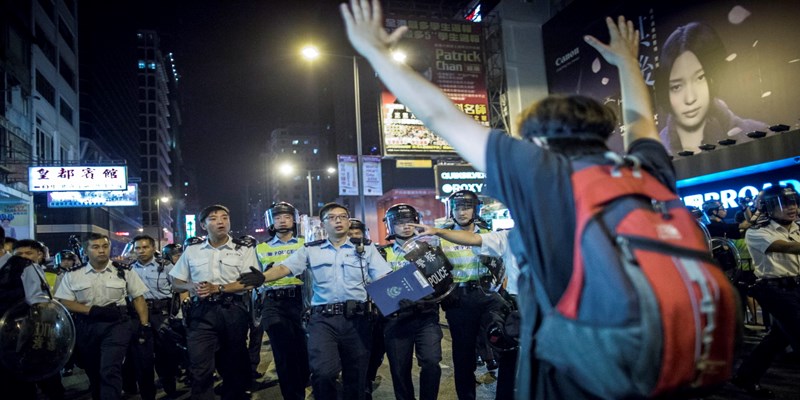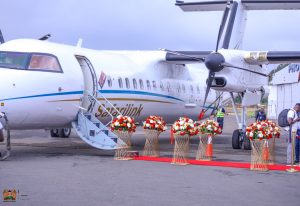The Global Business Travel Association estimates the industry represents spending of $1.4 trillion worldwide and predicts that number will rise to $1.7 trillion by 2022.
In its U.S. Corporate Travel Report 2018-2022, Phocuswright says managed travel represents a third of the total travel market in the United States and will reach $138 billion by 2022, with 86% of that spending taking place online.
“Corporate travel in the U.S. is solidly and steadily increasing, helped by rising business confidence and despite recurring geopolitical challenges like tightened immigration policies. The online segment continues to grow rapidly and dominate corporate bookings,” the report states.
And that online segment is broad and diverse – ranging from self-service booking tools to platforms from travel management companies and suppliers and incorporating newer technologies such as machine learning, chatbots and virtual assistants.
One of the clearest examples of how technology is changing business travel is in risk management.
It’s generally accepted that all companies, large or small, have a “duty of care” for their employees, defined as a moral – and sometimes legal – obligation to keep them safe while traveling for work.
A comprehensive travel risk management program is one part of providing the duty of care.
For the third part in our monthlong series on business travel, we take a look at how technology – specifically mobile devices and artificial intelligence – are enabling that risk management to be both more effective and more efficient.
Smart machines
The recent issues in Hong Kong provide a fitting example of the need for travel risk management. Tensions have escalated in the last few months, with protests growing in size and scope, temporarily shutting down subway lines, roads and last week the international airport.
Companies with employees traveling to, from and within Hong Kong need to have up-to-date information on what is happening on the ground to assess the level of risk and urgency.
At the heart of solutions to aid in this process are machine learning and artificial intelligence.
Rather than employing hundreds of people to work around the clock reading and watching news sources and scouring social media, risk management firms can use technology to do that work – instantly and in any language.
“Now software is doing all the heavy lifting,” says Adam St. John, founder and CEO of Sitata, a risk management firm that started in 2012 with a focus on leisure travelers and recently expanded its offering for corporate clients.
“You can think of using these fancy algorithms as a really good giant filter. We try to shove as much as we can through that filter and then the filter does an excellent job of plucking out these events and notifying our team about them.”
Using rules-based algorithms, for example to flag news reports and social media posts using words such as “earthquake” or “shooting,” the algorithms detect both potential problems brewing around the world and real-time incidents.
“The second phase is the analysis of all the data to figure out who cares about the particular issue based on the location and the traveler’s profile and itinerary. All of that is managed with humans in the loop, but the magnitude of monitoring the entire world is left to machines,” says Bruce McIndoe, founder and CEO of WorldAware, formerly known as iJet International.
The company has a team of 130 intelligence and security experts providing services to between 250,000 and 350,000 travelers every day, directly to companies such as McDonald’s and NASA and through more than 80 partners including Allianz Travel, American Express Global Business Travel and Sabre.
AI is also adding speed to the risk management process.
In a presentation at the Global Business Travel Association convention August 7 in Chicago, Stabilitas co-founder and CEO Greg Adams says artificial intelligence can analyze and assess potentially dangerous events in about four minutes, versus an average of 40 minutes when done by humans.
But he also cautions that it takes time for these algorithms to learn.
“Machines are pretty dumb, especially when you are starting out. They lack a lot of context that is really important,” Adams says.
“We saw this when processing information from news sources – sporting events look a lot like critical events around the world [with words like] ‘bomb,’ ‘shootout,’ an ‘explosion off the line.’ We see a lot of false positives, and we have to find ways to bring context to these machine learning models.”
Mobile first
Gathering and analyzing information about critical events is just one part of the risk management process.
“We can have great intel and great capability, but if we can’t communicate with the individual, then it’s really all for naught,” McIndoe says.
And mobile technology – the combination of smartphones, data networks, Wi-Fi and GPS – makes that communication easy and instantaneous.
McIndoe says this is of value from the moment a destination is being considered.
“Both the employee planning to travel and the organization needs to make sure they are comfortable having the employee go and what they need to do around immunizations and security and even cultural awareness,” he says.
“Mobile plays a role in that because if you can put all that intelligence and knowledge about the destination in the palm of their hands they are more likely to get at it and use it then if they have to research on their own.”
All of the risk management companies we spoke to offer both standalone apps that employees can download as well as software development kits for companies and partners to integrate the service into their apps. These platforms enable itinerary management, push notification and requests for check-ins when a safety threat emerges.
St. John says GPS-based tracking enables the system to make intelligent decisions about who is notified when a hazard develops.
“If we know you are on a particular street corner in Mumbai we might not necessarily tell you what’s happening in Delhi. But if we only know you are in India, we might elect to send it to you,” he says.
“We can override that as well. So if a civil war breaks out somewhere we are going to tell everyone in the country.”
While travelers using Sitata can opt to turn off tracking, St. John says less than 5% do.
“We make an especially strong effort to explain what we are doing with your data, the fact we are not sharing it with anyone and why we are doing it,” he says.
“Broadly speaking if people have trust in your brand and there’s an important reason behind it than people are willing to do share location.”
McIndoe says he prefers a strategy of “location awareness” rather than tracking the individual at all times.
“We basically report in where they are from a city-level basis, and then if there are issues, for example in New York, we would send that alert to all the devices that are reporting they are in New York City. And the device can figure out where they are with precision and how close they are to that issue and whether they should be notified,” he says.
Employees near a threat can be asked to check in with their location, facilitating a direct response to those in need.
As part of the ongoing effort to help the machine learning systems get “smarter,” Adams says Stabilitas asks travelers for a “thumbs up/thumbs down”-type response on whether information they have received is relevant.
And McIndoe says in the next decade he expects that not only will the algorithms improve, but systems will also start to incorporate more detailed traveler profile information.
“Getting down to if I, a female Muslim traveling, what do I need to know versus a black gay man versus a white Jewish fellow. And so looking at sexual orientation and gender and religion and maybe even disability or health things … with machine learning to provide guidance and advice in near-real-time is where this industry is going over the next five to 10 years,” he says.
“This melding of technology and content and contextual information is a very powerful risk management approach.”
Source: https://www.phocuswire.com/business-travel-part-3-risk-management




